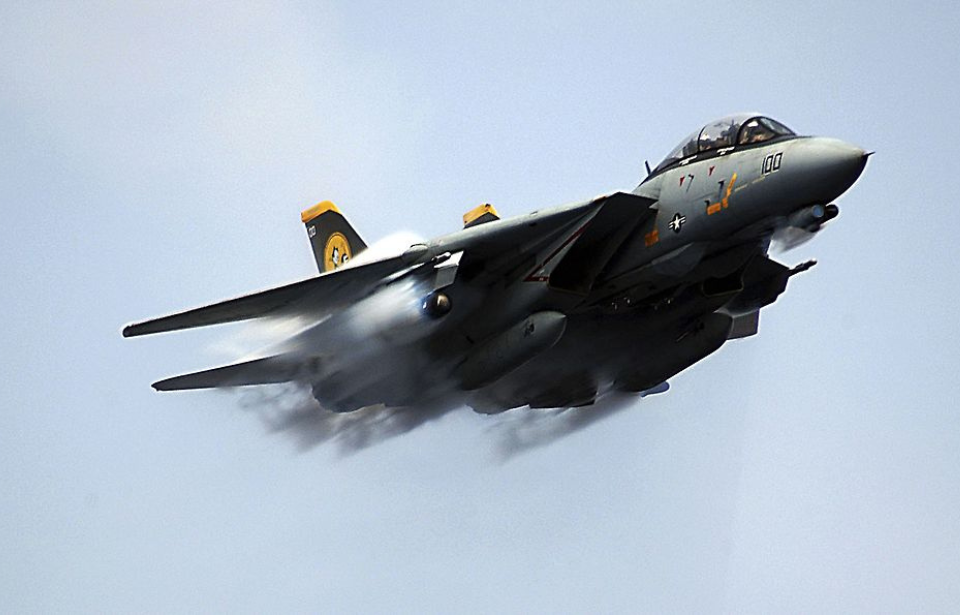The Grumman F-14 Tomcat is famous for being one of the most iconic aircraft ever deployed by the US Navy, playing a central role at the Navy’s TOPGUN School. From its first flight in 1970 until its retirement in 2006, this supersonic jet served as the Navy’s leading maritime air superiority fighter, tactical reconnaissance platform, and fleet defense interceptor. Its journey began with the Naval Fighter Experimental (VFX) program.
Naval Fighter Experiment (VFX) program

The F-14 Tomcat’s origin story dates back to the middle of the Cold War, when the US Navy was in the market for an interceptor aircraft capable of protecting carrier battle groups against Soviet anti-ship missiles. This initially resulted in the development of the Douglas F6D Missileer, but its inability to adequately defend itself led to the aircraft’s cancellation in late 1961. This was then followed by the General Dynamics-Grumman F-111B, which also never entered production.
These failed attempts at developing the necessary aircraft led to the Naval Fighter Experiment program, which called for the following requirements:
- Tandem two-seater, twin-engine aircraft capable of air-to-air combat.
- Ability to reach speeds of Mach 2.2.
- Built-in M61 Vulcan cannon.
- Capable of firing either six AIM-54 Phoenix or a combination of four AIM-9 Sidewinder and six AIM-7 Sparrow missiles.
Developing the Grumman F-14 Tomcat
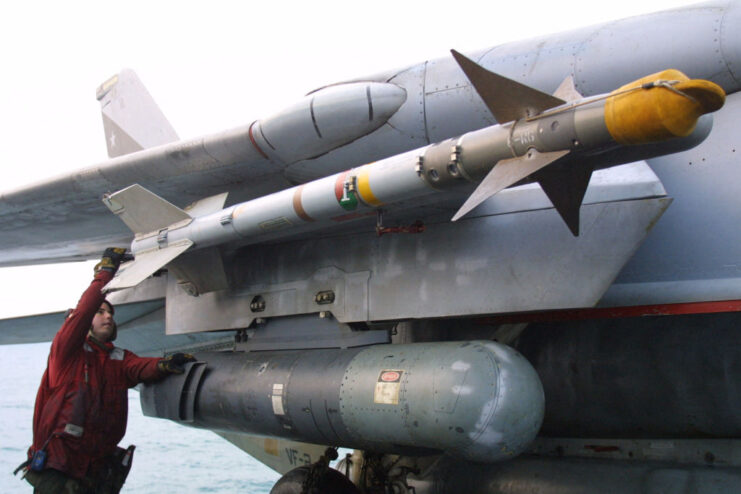
Although multiple companies proposed designs, Grumman eventually secured the contract. Because of the US Navy’s pressing need for the aircraft, the prototype phase was skipped, resulting in the first test flight on December 21, 1970. Missile tests with the AIM-54 Phoenix commenced in less than two years. By September 1974, the F-14 Tomcat had officially entered service.
Throughout the design and production phases, numerous upgrades and modifications were implemented, making the F-14 the costliest fighter aircraft of its time. Between 1969 and 1991, 721 units were produced.
Grumman F-14 Tomcat specs
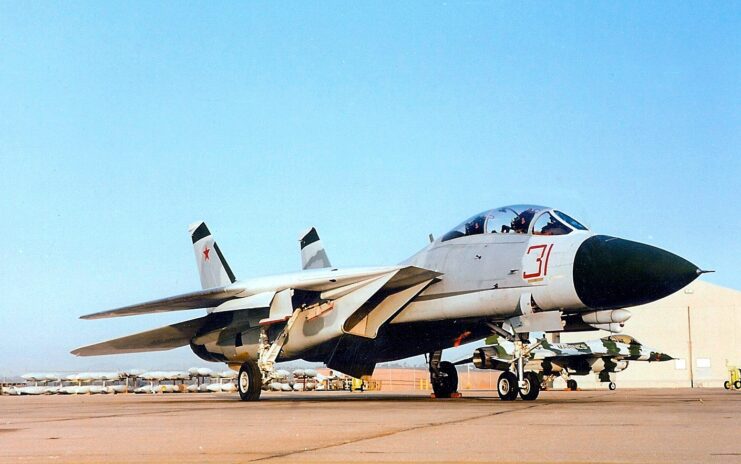
As aforementioned, the F-14 Tomcat was designed to perform more than one task, with the US Navy wanting both a fighter and an interceptor. As such, its design needed to provide the aircraft with these capabilities.
From wing-tip to wing-tip, the F-14 measured 64 feet, with an empty weight of nearly 44,000 pounds and a loaded one of 61,000. Following the “A” variant, it was powered by two General Electric F110-GE-400 afterburning turbofans, which were spaced nine feet apart to allow room for the missile carriage and create a large lifting surface. These engines allowed the aircraft to hit speeds of Mach 2.34 and a range of 1,840 miles.
In accordance with the armament requirements laid out by the Naval Fighter Experiment program, the F-14 was equipped with an M61 Vulcan capable of firing 675 rounds. It also had four undercarriage points and two hardpoints, which allowed it to carry the necessary missiles, which could be fired within 38 seconds.
A later iteration of the aircraft, the F-14B, also featured the ability to conduct ground attacks. This was accomplished through the use of Lockheed Martin’s Low Altitude Navigation and Targeting Infrared for Night (LANTIRN), as well as the addition of bomb-dropping capabilities.
Later upgrades included multifunction cockpit displays, high speed multiplex digital data busses and head-up displays, as well as a new glass cockpit, digital avionics and enhanced datalink to increase the crew’s situational awareness.
Operational history with the US Navy
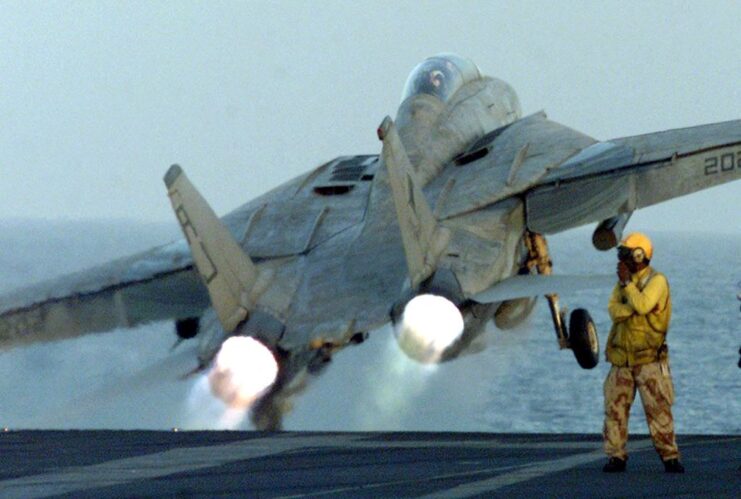
Upon being equipped by the US Navy in 1974, the F-14 Tomcat served as a replacement for the McDonnell Douglas F-4 Phantom II and began its combat service as a photo reconnaissance platform. It participated in Operation Frequent Wind in 1975 and was thrust onto the world stage following the Gulf of Sidra Incident, when two Libyan Sukhoi Su-22 Fitters fired upon the American aircraft in 1981.
Throughout Operation Desert Storm, the F-14 was stationed primarily over the Persian Gulf and the Red Sea, where it served in both reconnaissance and strike escort roles. Fast forward to the start of the War in Afghanistan in 2001, the aircraft was among the first to launch strikes against enemy targets in the Middle East.
The F-14’s final combat mission occurred in early 2006, when a pair, launched from the USS Theodore Roosevelt (CVN-71) dropped a single bomb over Iraq. A few months later, it was officially retired from service.
Adopted by the Imperial Iranian Air Force
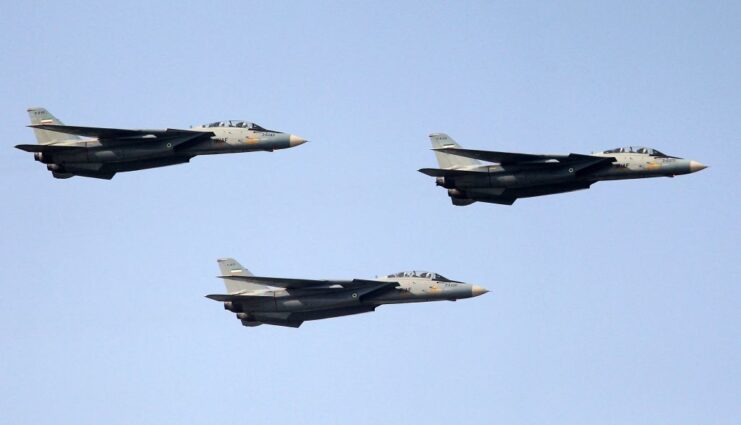
The sole foreign operator of the F-14 Tomcat was the Imperial Iranian Air Force, which adopted the aircraft into service in 1976. However, following the Iranian Revolution, all Western orders were canceled, including those for American aircraft. That being said, the F-14s that had already been delivered were still flown.
Throughout the Iran-Iraq War, the aircraft was manned by the Islamic Republic of Iran Air Force, with pilots scoring 50 air-to-air kills in the first six months of the conflict. Iran claimed that, overall, the F-14 shot down at least 160 Iraqi aircraft.
Top Gun (1986)

As aforementioned, the F-14 Tomcat was among the aircraft operated by the US Navy’s TOPGUN School, which means it came as no surprise when it made an appearance in the 1986 film, Top Gun, starring Tom Cruise. The actor stars as naval aviator Lt. Pete “Maverick” Mitchell, who’s initially stationed aboard the USS Enterprise (CVN-65) and sent to TOPGUN School, where he flies F-14s.
More from us: North American B-25 Mitchell: The Most Produced American Medium Bomber of World War II
New! Want to become a trivia master? Sign up for our War History Fact of the Day newsletter!
Top Gun quickly became one of the highest-grossing films of 1986, and its theatrical success saw Navy recruitment jump nearly 500 percent; aspiring pilots dreamed of becoming the real-life Maverick.
